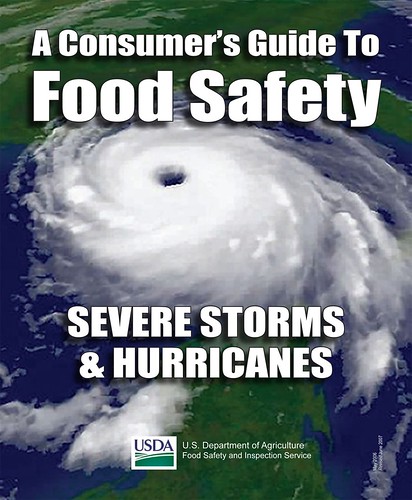The 2011 Hurricane Season officially began June 1. If you live in a coastal area, it’s important to be prepared, particularly when it comes to safe food and water.
The best strategy for you and your family is to always have a plan in place that everyone knows and that includes these food and water safety precautions.
Steps to Follow to Prepare for a Possible Weather Emergency:
- Use appliance thermometers in your refrigerator and freezer to help determine if food is safe during power outages. Refrigerator temperature should be 40° F or lower and the freezer should be 0° F or lower.
- Freeze refrigerated items such as leftovers, fresh meat, and poultry that you may not need immediately—this helps keep them at a safe temperature longer.
- Freeze containers of water for ice to help keep food cold in freezer, refrigerator, or coolers in case of power outage. You can also use melted ice for drinking water.
- Purchase or make ice cubes and freeze gel packs in advance.
- Plan ahead and know where to purchase block ice and dry ice, just in case.
- Have coolers on hand to keep the refrigerator food cold in case the power is out for more than 4 hours
If the Power Goes Out:
- Keep the refrigerator and freezer doors closed as much as possible.
- A refrigerator will keep food cold for about 4 hours if you keep the door closed.
- A full freezer will keep its temperature for about 48 hours (24 hours if half-full)
- If the power is out for an extended period of time, buy dry or block ice to keep the refrigerator as cold as possible. Fifty pounds of dry ice should keep a fully-stocked 18-cubic-feet freezer cold for two days.
When the Power Is Restored:
- Check the temperature in the refrigerator and freezer. If the thermometer reads 40° F or below, the food is safe.
- If no thermometer was used in the freezer, check each package. If food still contains ice crystals, it’s safe.
- Discard any perishable food (such as meat, poultry, fish, soft cheeses, milk, eggs, leftovers and deli items) that have been kept in a refrigerator or freezer above 40° F for two hours or more.
- Never taste food to determine its safety!
- When in Doubt, throw it Out!
For more information check out the Food Safety and Inspection Service’s fact sheet, Consumer’s Guide to Food Safety: Severe Storms and Hurricanes, or listen to our podcast here. Follow @USDAFoodSafety on Twitter for food safety tips when a natural disaster occurs in your area.





